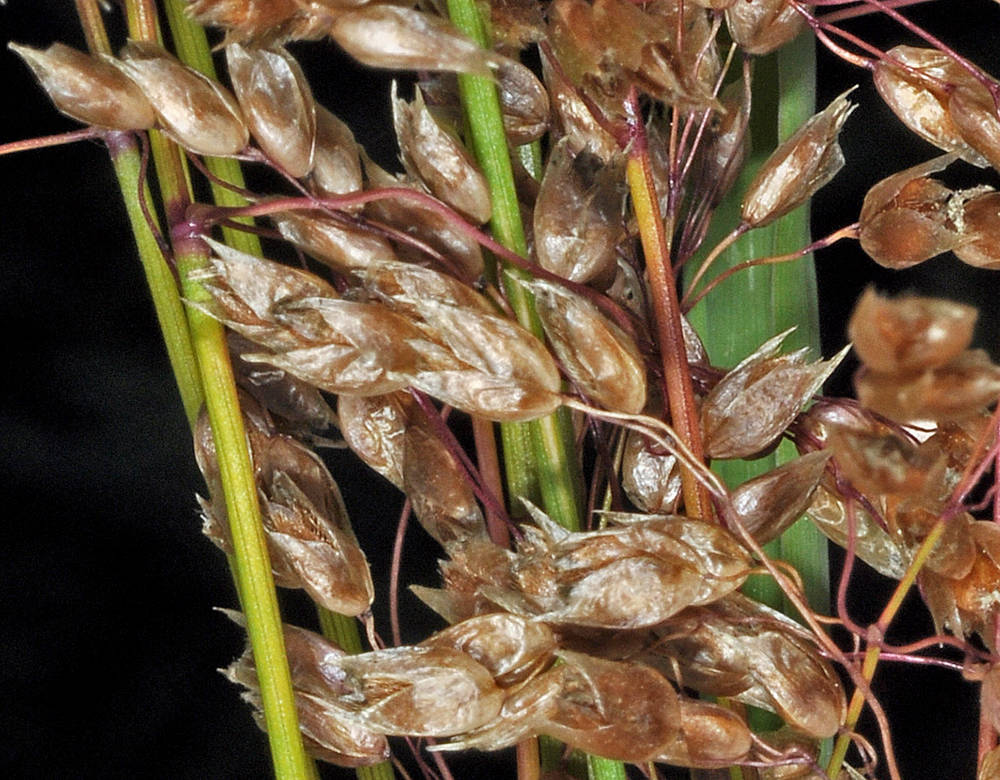Hierochloe odorata
(synonym of Anthoxanthum hirtum)
hairy sweetgrass, vanilla grass
blades to 25 cm on sterile shoots; much reduced on culms, 2.5–5.5 mm wide, narrowed at the base; dorsal surfaces glabrous and shiny; ventral surfaces hairy; flag leaves 1–3(6)cm × 3–4.5 mm.
(5)7.5–15 cm; open.
4–6.3 mm.
4–6.3 mm; ovate, exceeding the florets, glabrous; hyaline and more or less transparent, white to light brown, tinged with green or purple on the back near the base.
lower lemmas staminate, 3–5 × 1.1–1.5 mm; length/width ratio usually less than 4; more or less hairy all over, with hairs 0.5–1 mm on margins; to 0.5 mm toward the tips;
tips acute to awned, awns of lower lemmas 0.1–1 mm; upper lemmas bisexual, 2.9– 3.5 mm; shiny; hard; hairy distally; the hairs 0.5–1 mm and with bases strongly divergent from the lemma surface; acute.
1.6–2.1 mm in lower, staminate florets, 1.2–1.3 mm in upper; bisexual florets.
Hierochloe odorata
Wet meadows and freshwater marshes. 600–2200m. BW, Casc, ECas, Sisk. CA, ID, NV, WA; north to AK, east to Greenland; northeastern US. Native.
Hierochloë odorata is recognized by its more or less round spikelets with almost transparent glumes surrounding hairy brown lemmas. Its culm leaves are disproportionately small. It is very similar to H. occidentalis, which has broader leaves, longer flag leaves, and more open panicles.
Barbara Wilson
- Local floras:
BC,
CA,
OR
- Local Web sites:
CalFlora,
CalPhotos,
Flora NW,
PNW Herbaria
WildflowerSearch
iNaturalist (observations)
USDA Plants Database
- LBJ Wildflower Center
- SEINet
- Plants of the World Online
- Encyclopedia of Life
- Wikipedia
- Google Image Search



